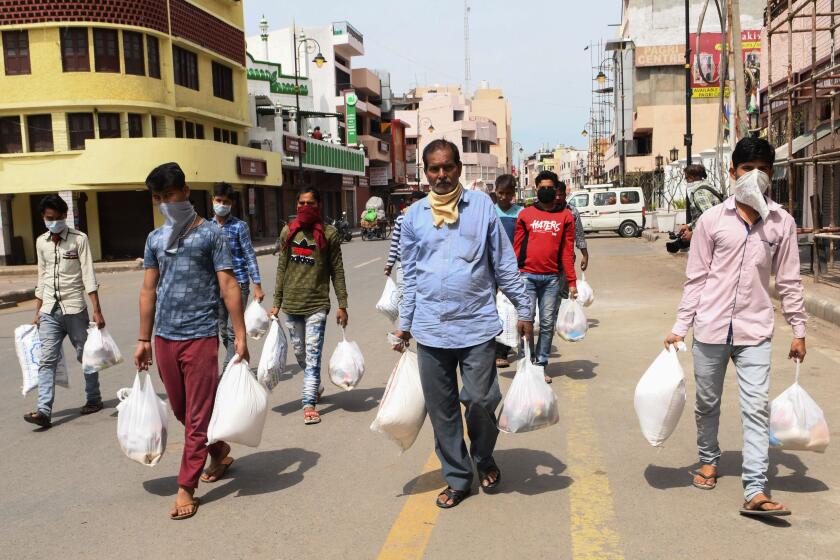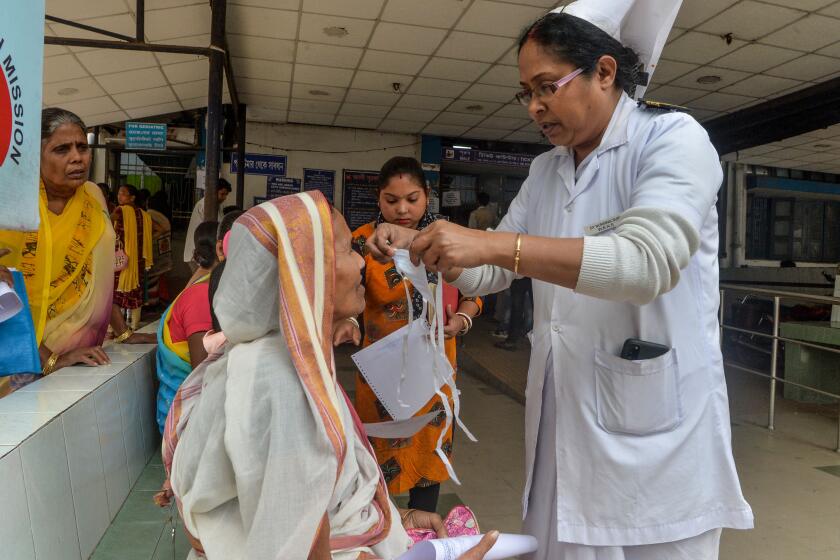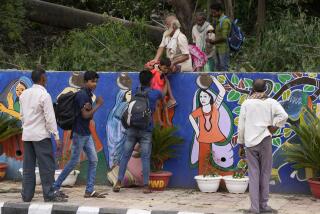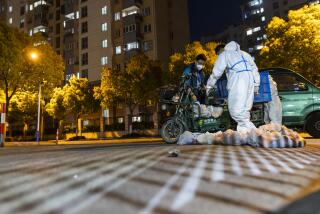Social distancing during the coronavirus? Not when a family of six shares one room
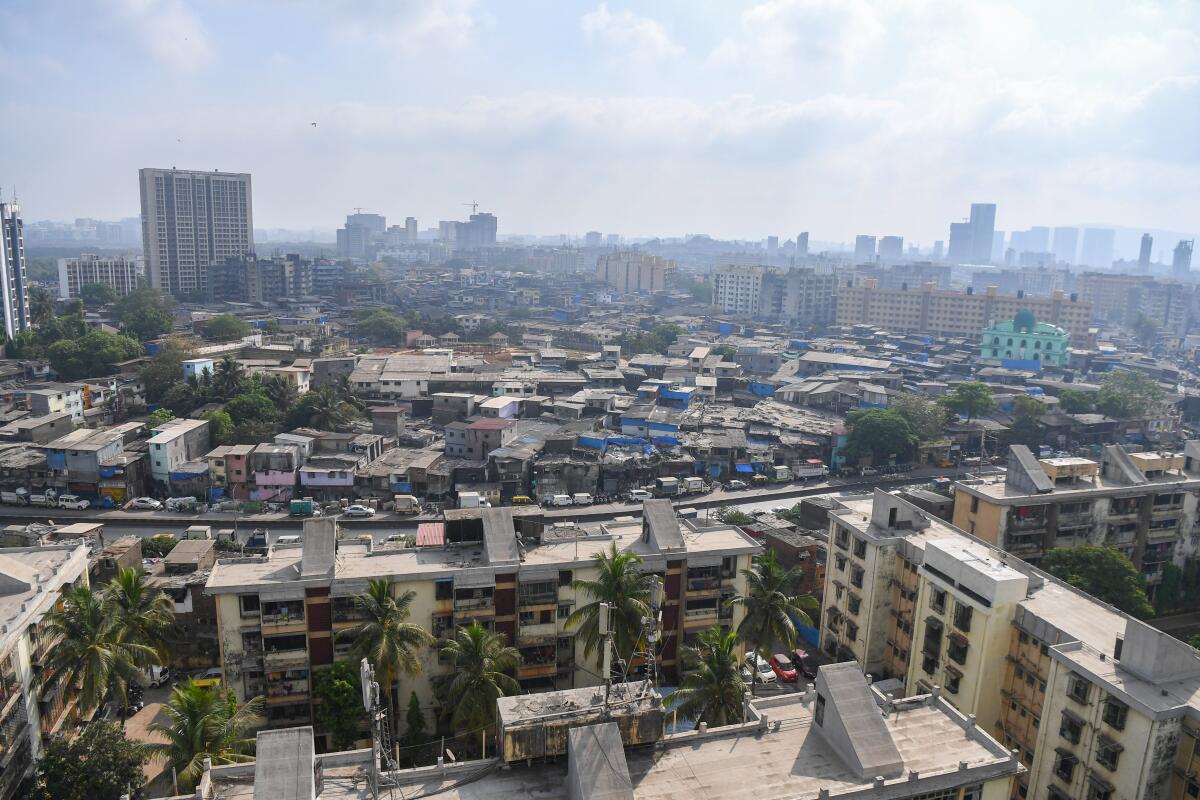
- Share via
MUMBAI, India — There is no sliver of space in Ashok Kunchikurve’s house for social distancing.
The 42-year-old Mumbai construction worker lives with his family of six in a single room covered in yellow tiles, an aging refrigerator against one wall, a stove lining the opposite wall. Only three can sit on the floor for lunch at one time.
A rickety ladder in the corner leads to a dimly lighted loft, where mattresses are laid out for him and his two adult sons. His wife, their teenage daughter and his mother-in-law sleep on the floor downstairs.
“I have to get out of the house to give some space to my family,” says Kunchikurve, his rotund face partially obscured by a surgical mask to protect him from the coronavirus that is pressing in on his sparse life.
He steps out into a narrow concrete alley, one of countless lanes zigzagging through Dharavi, one of Asia’s largest slums, where as many as a million residents cram into one square mile — an area roughly the size of John Wayne Airport.
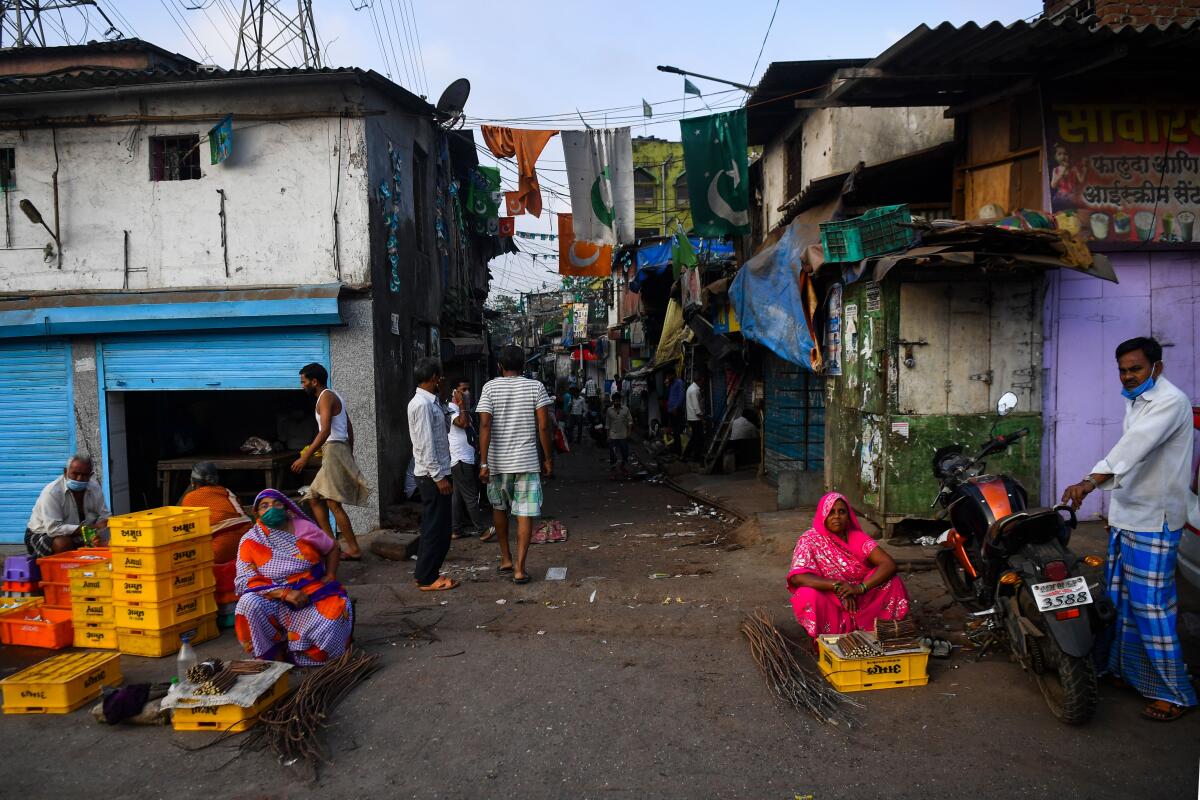
It is midmorning, the sun withering, but the alleys are packed so tightly with two-story dwellings that hardly any light comes through. Women wash vessels and clothes in the narrow lanes, sending streams of soapy water flowing toward an open sewer.
Men stand in small groups or crouch on the pavement, chatting away. The topic, of course, is the coronavirus.
Two weeks ago, Indian Prime Minister Narendra Modi ordered Indians to stay indoors for 21 days to curb the spread of the virus, which has infected more than 1.4 million people around the world, including more than 5,300 in India.
A three-week lockdown affecting 1.3 billion people has unleashed chaos as stranded migrant workers sleep in streets and police beat curfew-breakers.
The physical distancing measure, endorsed by the World Health Organization and implemented in many other countries, has brought new hardship to Dharavi, a city within a city, home to many of the laborers, housekeepers, municipal workers and shopkeepers who make India’s financial capital run.
Dharavi is dotted with tens of thousands of tin-roofed shanties and one-room manufacturing units, where Indians’ daily struggle for space is laid bare in a nation where lives are folded into one another. According to the 2011 census, nearly 92 million Indian households live in one-room dwellings.
“Those asking us to practice social distancing need to come and see how we live in a room of 8 feet by 8 feet,” Kunchikurve says, carefully sidestepping the slippery streams of water at his feet.
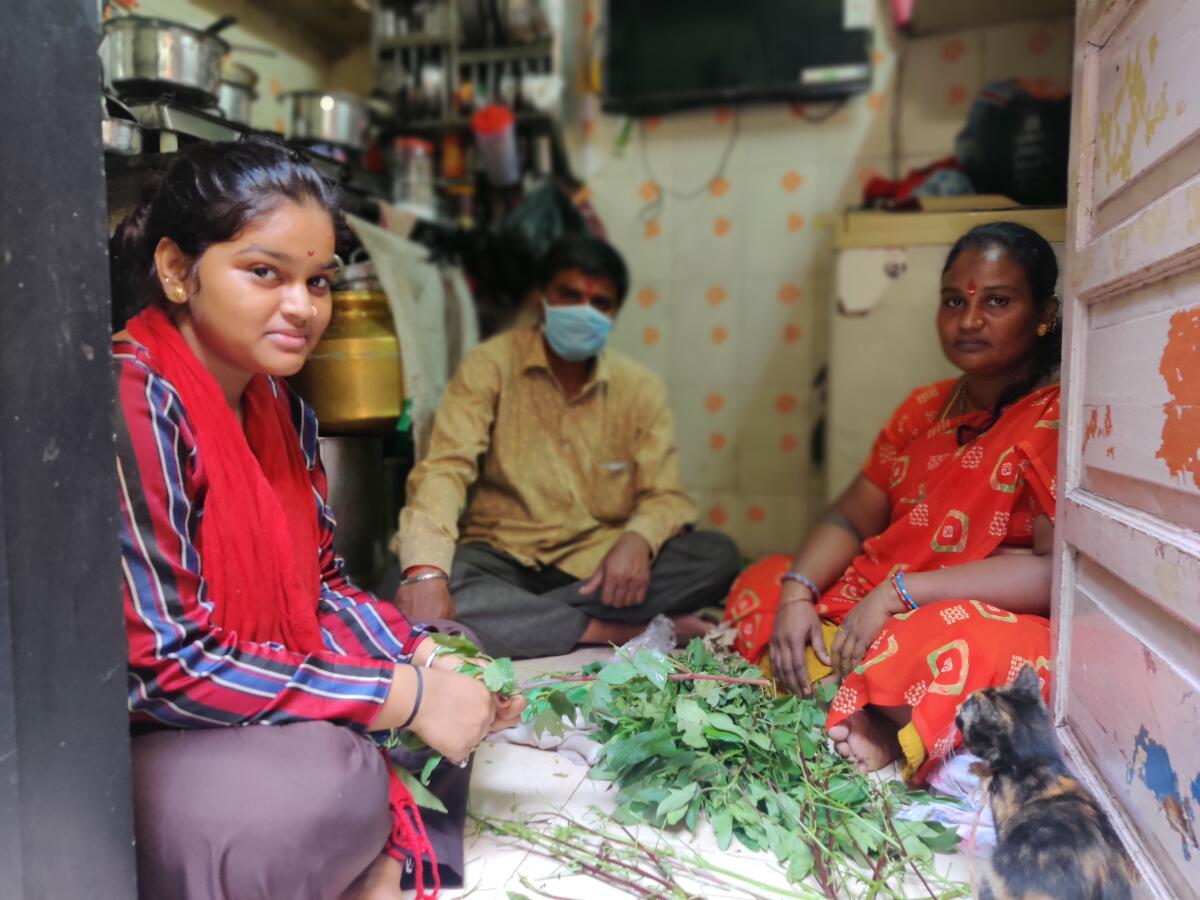
The door to their house remains open for ventilation. Right beside the doorway, a rusty ladder leads to another household right above theirs.
His wife, Renuka, sits just inside the doorway, cleaning green vegetables, dabbing the sweat on her forehead with her red patterned sari. Their 16-year-old daughter, Vishakha, at home because her school is closed, watches a pot of dal simmering on the stove.
Kunchikurve has not earned a day’s wage — typically about $4 — in three weeks, since construction sites in Mumbai began shutting down in early March because of the outbreak.
Their 18-year-old son, Vikas, who also works in construction, is jobless too. Their elder son, Vishal, 22, works for the municipality cleaning the streets of Mumbai, a job that worries his mother in the time of a pandemic.
“He is hardly protected with masks or sanitizer,” she says. “But our kitchen runs on his salary in these times. Otherwise we would have starved.”
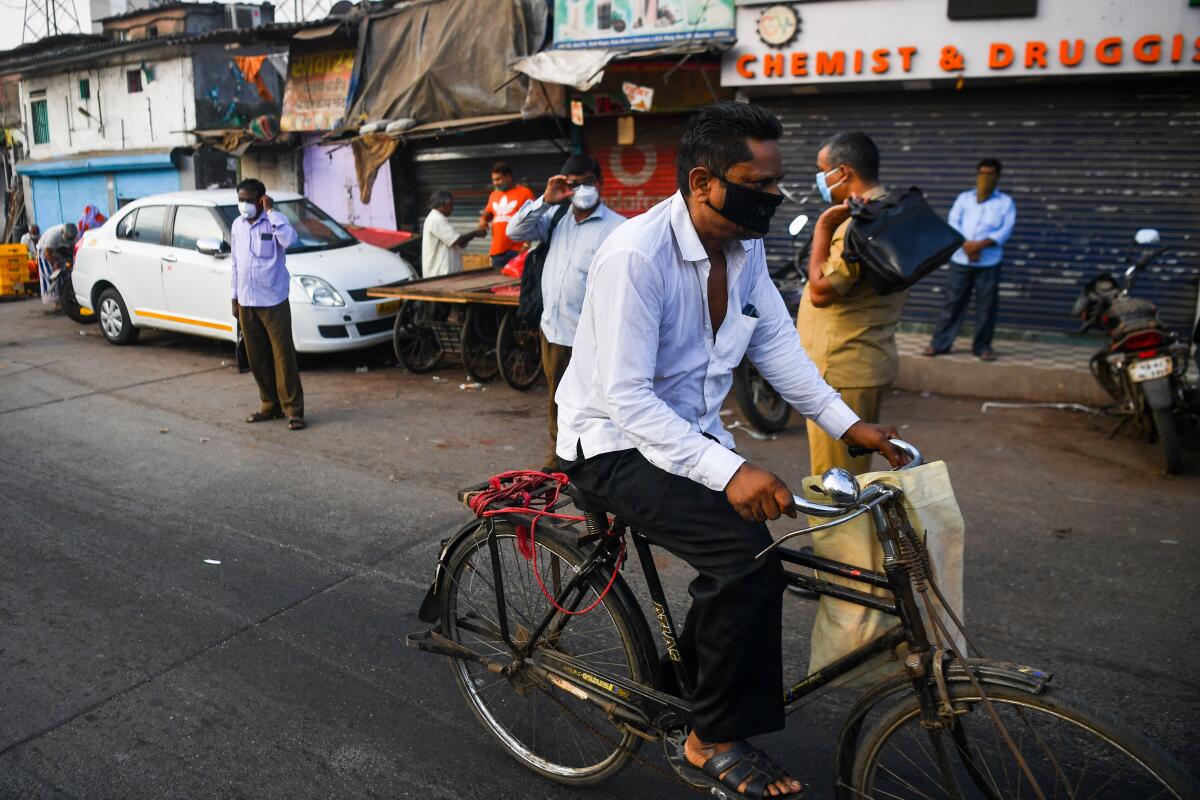
Dharavi sits within sight of high-rise apartment buildings where better off families have room to spread out during isolation. Renuka works as a housekeeper in one of those buildings, but she hasn’t been able to go to work since the lockdown started, and she doesn’t know if the families she works for will pay her for the missed time.
These days she walks about half a mile to the market for groceries, the bazaar she usually frequents having closed. She negotiates the eerily empty roads and the occasional police officer who asks, brusquely, why she is out at all.
Dharavi was on edge. Two months after India recorded its first coronavirus case Jan. 30, there had been no confirmation of any infections in the slum.
But the virus was closing in. Mumbai had identified more than 200 infections and 17 deaths related to the coronavirus, the most in the country. Residents of Dharavi felt it was just a matter of time before COVID-19, the disease caused by the coronavirus, reached their doorsteps.
Frustration and uncertainty were setting in.
“Fights break out over little things,” Kunchikurve says. “Everyone is scared of the coronavirus. We are anxious about finding work. We know how vulnerable we are.”
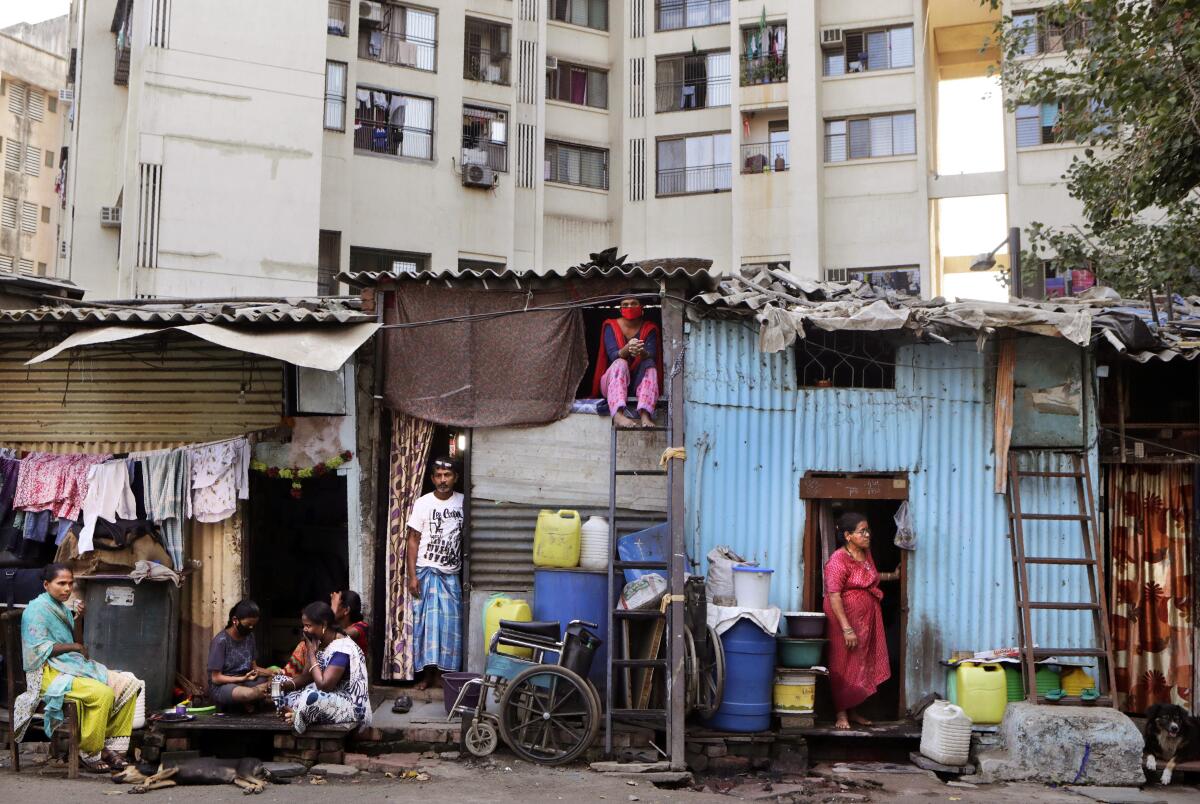
There is little the residents of Dharavi can do. They are powerless to isolate themselves,
but they also know that Indians expect the number of cases to explode here.
“When the virus spreads,” Kunchikurve says, “the poor will be blamed for it.”
City workers and volunteers have fanned out across Dharavi to raise awareness about the disease, distribute masks and keep track of particularly vulnerable residents: older people, pregnant women and those with preexisting respiratory conditions.
To keep himself occupied, Kunchikurve volunteers with a local charity group that distributes food to the families of out-of-work laborers. After a quick lunch of dal, rice and boiled greens at home, he set off for the charity group’s office. Over the next few hours they would hand out packets of rice, wheat, sugar, cooking oil, tea and biscuits to families even less fortunate than theirs.
Indian medical workers are treating coronavirus patients without adequate equipment. One doctor warns of ‘mass desertion’ in the healthcare system.
Vishakha’s public school hasn’t given her any material to study during the lockdown, so she spends the afternoon rereading notes and textbooks and watching the news with her mother on the small TV mounted on the back wall next to the kitchen utensils.
“It is important to stay updated at a time like this,” Vishakha says. “We need to know how to stay as safe as possible.”
“There’s nothing we can do,” Renuka says quickly. “Other than maintaining decent hygiene and social distancing, which is difficult for us to follow.”
She points to the sole water tap in their house, and two small white buckets, where they wash their hands and feet the moment they come in the house. For everything else they must use the nearby public toilet, which even these days, in the time of an outbreak that demands vigilant cleanliness, emits a foul odor.
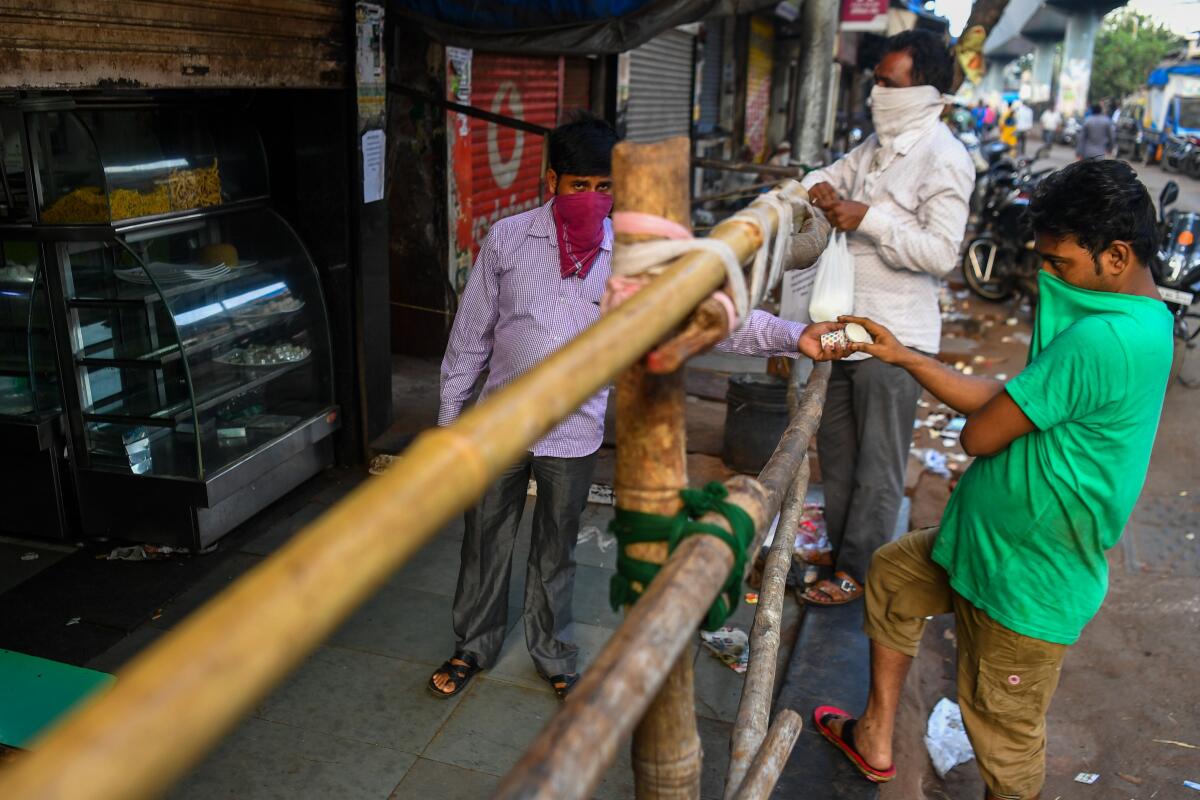
The WhatsApp chat groups — India’s ever present and ever problematic digital grapevine — have been running wild with information about how to stay clean and safe during the pandemic, as well as the latest news on coronavirus cases that could not be verified but that everyone assumed were true.
There were lists of people who had been quarantined, and a story going around that a man in a high-rise apartment next to Dharavi had contracted the virus. The man’s picture was being circulated too, and people studied it closely to see if they knew who he was and wondered if they could be part of a chain of infection.
“That building is only half a kilometer [about 500 yards] away,” Renuka says, shaking her head. “It is getting closer to home.”
They shuddered at the thought of the virus arriving in Dharavi. One infection would probably mean dozens more, possibly hundreds. But where to go?
“I can only imagine panic-stricken people trying to flee in a situation like that,” Renuka says.
Bad news, as it often does, arrived the other day with word that a 56-year-old garment shop owner living in Dharavi had contracted COVID-19. Soon, the story was updated: The man had died.
The next day came reports of two more cases in the slum, and efforts by municipal health workers to quarantine close contacts and seal off their neighborhoods. By the time this past weekend was over, five people in Dharavi had tested positive for the virus.
Parth M.N. is a special correspondent.
More to Read
Sign up for Essential California
The most important California stories and recommendations in your inbox every morning.
You may occasionally receive promotional content from the Los Angeles Times.
